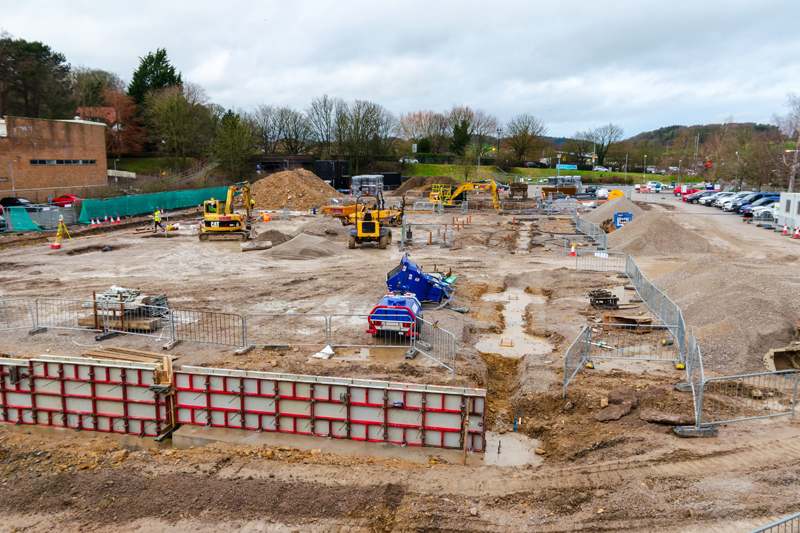


Brownfield redevelopment
Photo by iStock October 04, 2023
University of Delaware receives funding from U.S. Environmental Protection Agency for brownfield sites
Much like humans who overcome arduous challenges, struggling landscapes can bounce back with the right support. Brownfield sites, which are properties whose redevelopment is halted by hazardous contaminants, are defunct landscapes. When given the right resources, these sites can undergo significant transformation.
Members of the University of Delaware’s College of Agriculture and Natural Resources and Joseph R. Biden School of Public Policy and Administration are tackling brownfield sites throughout Delaware through a new U.S. Environmental Protection Agency (EPA) grant.
In conjunction with the Grant Assistance Program (GAP) through the Institute for Public Administration (IPA), UD’s Coastal Resilience Design Studio (CRDS) will bring technical assistance to communities in need.
“The goal of the funding that we receive in collaboration with IPA is that we’re going to be working with one to two communities every year on brownfield site assistance,” said Zachery Hammaker, incoming director of the CRDS. “The goal of this is to bring some equity back into communities that have brownfield sites.”
Providing technical assistance means guiding community leaders and stakeholders through evaluating a brownfield property. Together, they complete a proper inventory, assess the necessary clean-up and determine the most efficient and economical revitalization process.
“The intention behind this funding is to understand what are the needs of the community at large, what are the needs of the local stakeholders and how we might think about reusing this land,” Hammaker said.
UD is one of several universities that received funding for brownfield assistance. It was granted under the EPA’s Technical Assistance to Brownfield Communities (TAB) program, developed to revitalize brownfield sites nationwide. The EPA awarded six TAB grants, spanning cross-country from regions one through 10.
West Virginia University (WVU) is the TAB provider for EPA Region 3 (Mid-Atlantic), consisting of Delaware, District of Columbia, Maryland, Pennsylvania, Virginia and West Virginia. The WVU Technical Assistance for Brownfield Communities program serves as Region 3’s home base, and UD, WVU, Virginia Tech and Marshall University are all in on the action.
“The state program is so robust that not many people use the EPA funding that’s available,” said Lori Spagnolo, a policy scientist at IPA. “We’ll be working a lot more to educate people about the EPA and the federal dollars that are available.”
Alongside associate policy scientist Matthew Harris, Spagnolo oversees the GAP team that worked to obtain UD’s brownfield funding. This program helps communities prepare applications for federal and state funding.
“This is a really important time,” Spagnolo said. “There are historical levels of funding available, and we certainly have lots of brownfields throughout the state that we want help.”
When drafting this proposal, IPA focused on planning and policy while CRDS developed the vision and implementation tactics and rallied community engagement.
“It was natural to have a joint proposal to span the consortium to address needs in Delaware and the surrounding area part of region three,” said IPA’s associate director Troy Mix. “We find ourselves in a good position to be able to provide more value to our partners across the state.”
Mix served as the proposal’s principal investigator, helping lead the application. Each member of his team contributed a rich professional history, like Spagnolo, former brownfield coordinator for the Department of Natural Resources and Environmental Control, and Harris, former senior planner for the city of Wilmington. Half of the team that came with Hammaker includes associate professor of landscape architecture Eric Bardenhagen and coastal communities development specialist Edward Lewandowski from Delaware Sea Grant, which also funds CRDS.
Whether the result of their work yields a community garden, local park or something entirely different, the replacement of a brownfield site with a healthy landscape will, ideally, bring equity to underserved and underrepresented communities.
“You can really get a lot of economic development benefits by returning these sites back to practical uses,” Harris said. “The long-term goal is that the sites are actually brought back to life.”
Contact Us
Have a UDaily story idea?
Contact us at ocm@udel.edu
Members of the press
Contact us at 302-831-NEWS or visit the Media Relations website

